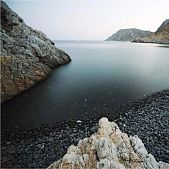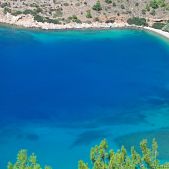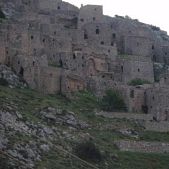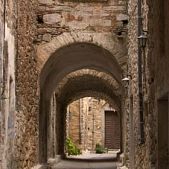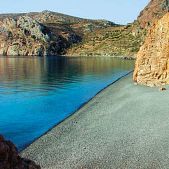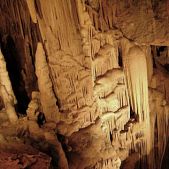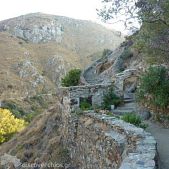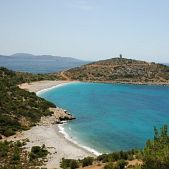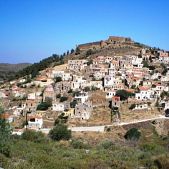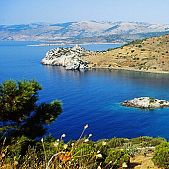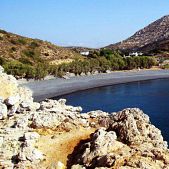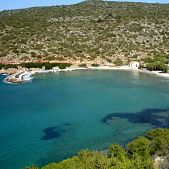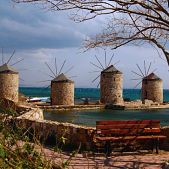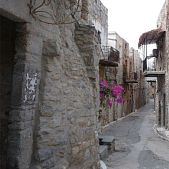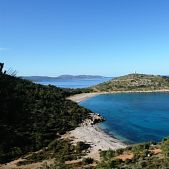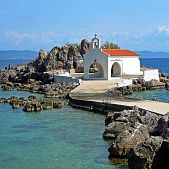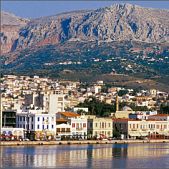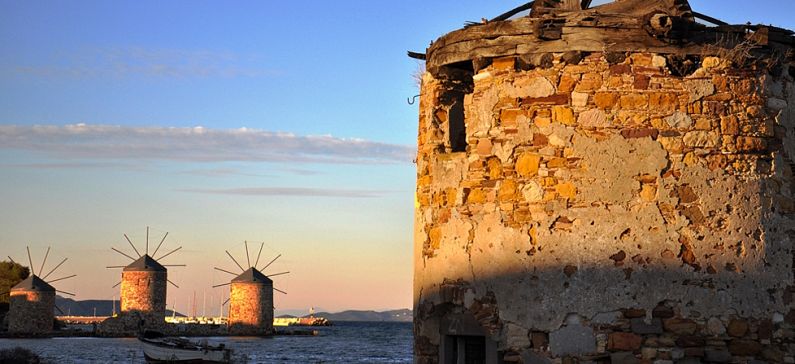
The Mastic’s island
The island of Chios remarkably combines history, culture and a beautiful natural landscape of exceptional architecture and local products. The island’s beaches will enchant you and a tour around the island’s monuments will travel you back to ancient years.
Chios is internationally acknowledged as a geological paradise thanks to the island’s diversity in the most ancient rocks in Europe, the most ancient ammonite fossils in Greece and also thanks to the impressive fault lines and large number of karstic formations. You will also have the opportunity to visit the island’s caves, two of which are open to the public, the Cave of Olympi and the cave of Saint Milk.
The Rock of Daskalopetra, hung above the beach of Vrontados, is one of the most popular monuments of the island. It was closely connected to Homer’s tradition and was acknowledged as the major poet’s school. Chios is one of the seven towns (Smyrna, Chios, Kolofon, Ithaca, Pyrgos, Argos and Athens) that claim Homer’s origins.
Chios’s beaches, like Lo’s Ormos, Afanis Naftis, Tagma at Santa Paraskevi, Daskalopetra and Glaros beach, can satisfy all visitors’ individual expectations. Moreover, three beaches, famous for their white pebble, are Giossonas, Nagos and Gialyskari. Near the western part of the island the popular beaches are Santa Eirini, Lithi, Elinta, Metohi, Tigani, Trahili, Prastia, Magemena, Managro, Limnia, Lefkathia, Limnos, Lampsa, Santa Markella. One of the most beautiful beaches on the island of Chios, with black volcano pebbles, resulting from the eruption of the currently idle volcano Psaronas, is Mavra Volia or Mavros Gialos, located near the picturesque harbour of Emporio.
The island’s capital offers magnificent view extending to the coastline of Asia Minor. During antiquity, this strategic location of Chios offered the island the advantage to be the leader of commerce, as it was the crossing between East and West and the island was in good terms with Ionia. Archaeological findings prove that the island has been inhabited since 6.000 b.C. and that the town of Chios was built by Ionians just before 1.000 b.C.
Near the town’s square old buildings are saved from the years of the island’s Turkish occupation, like the Bairakli Tzami, the Osmanie Tzami and several Ottoman fountains. The medieval castle of Chios dates back to the end of the 10th century, with narrow streets and buildings of several eras and has been inhabited since its construction. Near the gate, a double storey building, known as Palati Ioustiniani is located at the castle’s interior, dating back to the years of the Genoese occupation, housing the administration’s residency. Following its reconstruction, it currently houses periodic exhibitions of antiquities. Another building dating back to the Genoese occupation is Skotini Filaki, associated with a tragic event of the newer history of the island of Chios, as it served as a prison where 70 notables of the island were held in 1822 before their eventual hanging.
Anavatos, known as Mistras of the Aegean, is located at the western part of Chios and it is built on a rough steep, where a tragic chapter of the island’s history was written during the revolution of 1821 and the slaughtering of 1822. It is claimed that it was a martyrs’ place, where women from Chios committed suicide during the Destruction in order to avoid being held by Ottomans.
The internationally unique mastic is produced on the island of Chios. Based on historical sources, it is said that mastic was cultivated in Chios during the 10th century AD for pharmaceutical purposes. The tree that produces mastic is called the mastic tree and it is an evergreen shrub of 2-3m. of height, living for over 100 years. Mastic trees grow in several areas. However, only the mastic trees of Chios offer their uniquely flavoured resin in tears, mastihi, at the south part of the island, the Mastihohoria.
TIPS...
– Chios is one of the seven towns (Smyrna, Chios, Kolofon, Ithaca, Pyrgos, Argos, Athens) that claim Homer’s origins.
– The close distance between Chios and the coastline of Asia Minor is just 3,5 sea miles from Pounta peninsula to Tsesme.
– The Turkish Cemetery of eminent Ottomans was founded in the Castle’s square. Here lies buried the Kapudan Pasa Kara Ali, the leader of the Turkish fleet that was burned by Kanaris in 1822, during the Greek Revolution.
– The origin of Eugene Delacroix’s idea for his work The Slaughtering of Chios comes from the Greek Revolution and the island of Chios.
– Mastic trees grow in several parts of the island and only the mastic trees of Chios offer their uniquely flavoured resin in tears, mastihi, at the south part of the island, the Mastic Villages, thanks to the unique climate and soil of the area.

